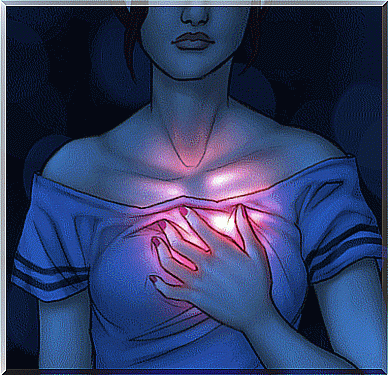There Are Sighs That Contain More Love Than Any Kiss
It is said that sighs are the answers that have remained unanswered one day. But also that many of them contain more love than any kiss.

In addition to serving as a way out when we are exhausted, sighs have a biological function, which is to supply us with oxygen when it becomes scarce in the lungs.
It is said that sighs are the answers one day left unanswered. But also that many of them contain more love than any kiss.
However… Where is the reality behind these bucolic phrases? It is curious to see that the world of emotions, that of literature and even popular psychology have built myths around sighs. Sighs have a remarkably romantic image.
However, sighing is more than a cathartic act of letting the stored stress escape. Where we alleviate this hidden pain, this memory still hurts us.
Because if we sigh, it is for a very concrete reason: so as not to die.
Today we want to explain to you the function of the different sighs that are part of our daily life.
We are sure it will be of great use to you.
Sighs are part of the cycle of life
We do it without realizing it. You may not perceive any of them, but in an hour we emit up to 12 sighs. This is without doubt, something incredible, because during these 12 times, your brain saved your life without you knowing it.
We will explain this to you in detail later.
The sigh buttons of our brain
According to a study published in the journal Nature , our brain is the one that decides what type of breathing we need at all times.
And in this wonderful “central computer” those who decide are actually two groups of neurons.
The people in charge of this study decided that day to call this curious group of neurons the “sigh buttons”.
This symbolic name actually responds to a perfect mechanism. We can describe it as follows:
- Our alveoli paralyze at times.
- When this happens, the ability of our lungs to change oxygen into carbon dioxide cannot be done in a very efficient manner.
- These two groups of nerve cells, called “sigh buttons”, immediately perceive this small dysfunction and come “to the aid”. These are two small structures located in our brain.
- Then, they give us the order to sigh in order to be able to open the alveoli and thus allow between the double of the conventional volume of oxygen compared to a normal breathing.
- This mechanism is something that we unconsciously realize, we do not realize it. However, and as we have already said, we do this up to 12 times per hour, thus starting the cycle of life again.
Emotional sighs
Now we know that we do indeed sigh not to die. This biological act and essential to our survival, it defines and explains involuntary sighs.
However, the human being is also characterized by emotional or voluntary sighs. We can describe them this way:

A sigh is an emotional catharsis in the face of a situation of stress or frustration.
- Many of us let out long sighs when something goes wrong. When, for example, we try to make a manual or mental effort and the result is not what we expected.
- In this way, sighs are “those chimneys” through which we let out pain, sadness. This air too much for the person we miss.
- This information is as interesting as it is strange: Karl Teigen is a famous scientist from the University of Psychology in Oslo (Norway), expert precisely in “emotional sighs”.
- According to his studies, a sigh also helps us feel compassion for someone. When we listen to a friend or loved one sigh, we interpret that gesture as a negative emotion.
As if this is a signal that we must pass on our support.
So much so that, according to Dr. Teigen, the emotional sigh also responds to an instinct to bond within our social group.
Sigh deeply, relax
As we already know, our brain takes care of allowing us to survive. However, we also deduce from this that the human being can carry out different types of breathing according to the moment and the need.
Approaches such as minfulness or yoga also teach us various types of voluntary and controlled breaths for very concrete purposes:
- Help us to be more present.
- To combat stress and take care of our health.
- In order to meditate and become aware of oneself and our needs.
 For our part, we recommend this: learn to sigh. Because with each sigh you let out tensions, concerns and, you also renew this “internal cycle of life”.
For our part, we recommend this: learn to sigh. Because with each sigh you let out tensions, concerns and, you also renew this “internal cycle of life”.
Take note of what we should do once a day for 20 minutes:
- Find a quiet place to rest mentally.
- Sit with your back straight.
- Lean your chest forward and rest your hands on your knees.
- Breathe deeply through your nose, counting 4 seconds. Hold for 4 more seconds, then release a long, loud sigh that lasts up to 7 seconds.
Once you start doing this simple exercise daily, your body and mind will notice.









